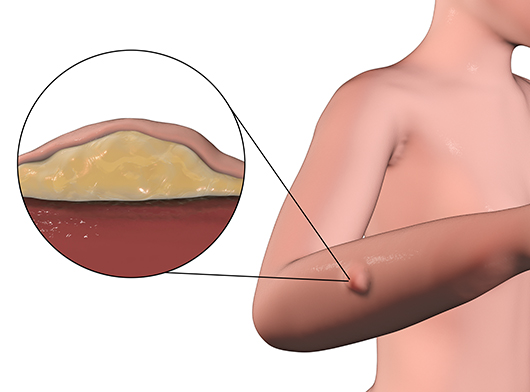- Imaging
- Laboratory
The most commonly used imaging tool for diagnosis and treatment
planning in soft tissue sarcomas is a contrast MRI of the affected
area.
-
Magnetic
resonance imaging (MRI) uses radio waves
and magnetic field interaction, which is processed in a high
speed computer system to produce detailed scan pictures of the
tissue, organs, bones, ligament and cartilage. It may be useful
in detecting tumours and their metastases. This diagnostic
technique offers greater soft tissue contrast than a CT scan. -
PET
CT
is considered to assess spread to regional nodes or distant
metastases to other body parts. It provides functional and
morphological details by utilising radiation derived from
Isotope labelled Glucose molecules to detect cellular glucose
uptake in cancer. -
Biopsy –
The doctor will choose one of the following types of biopsy
depending on location of the tumour:-
Core needle: The doctor uses a needle
slightly larger than the one used in an FNAC to remove a
cylindrical tissue sample. -
Excisional: An incision is made in the skin
and the entire growth is removed surgically. This is
done only for tumours in subcutaneous tissue and if size
is less than 5 cm.
-
Core needle: The doctor uses a needle


